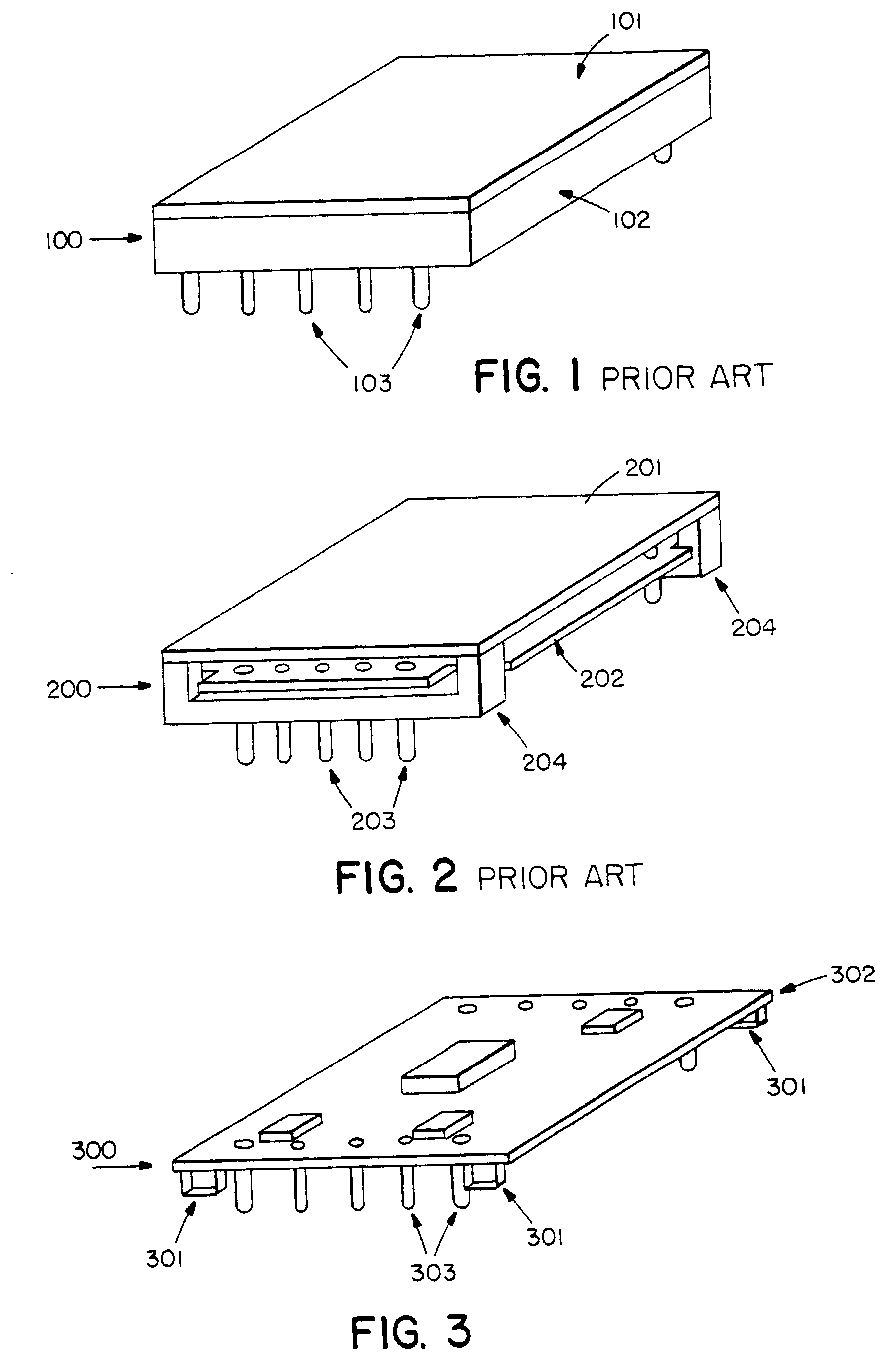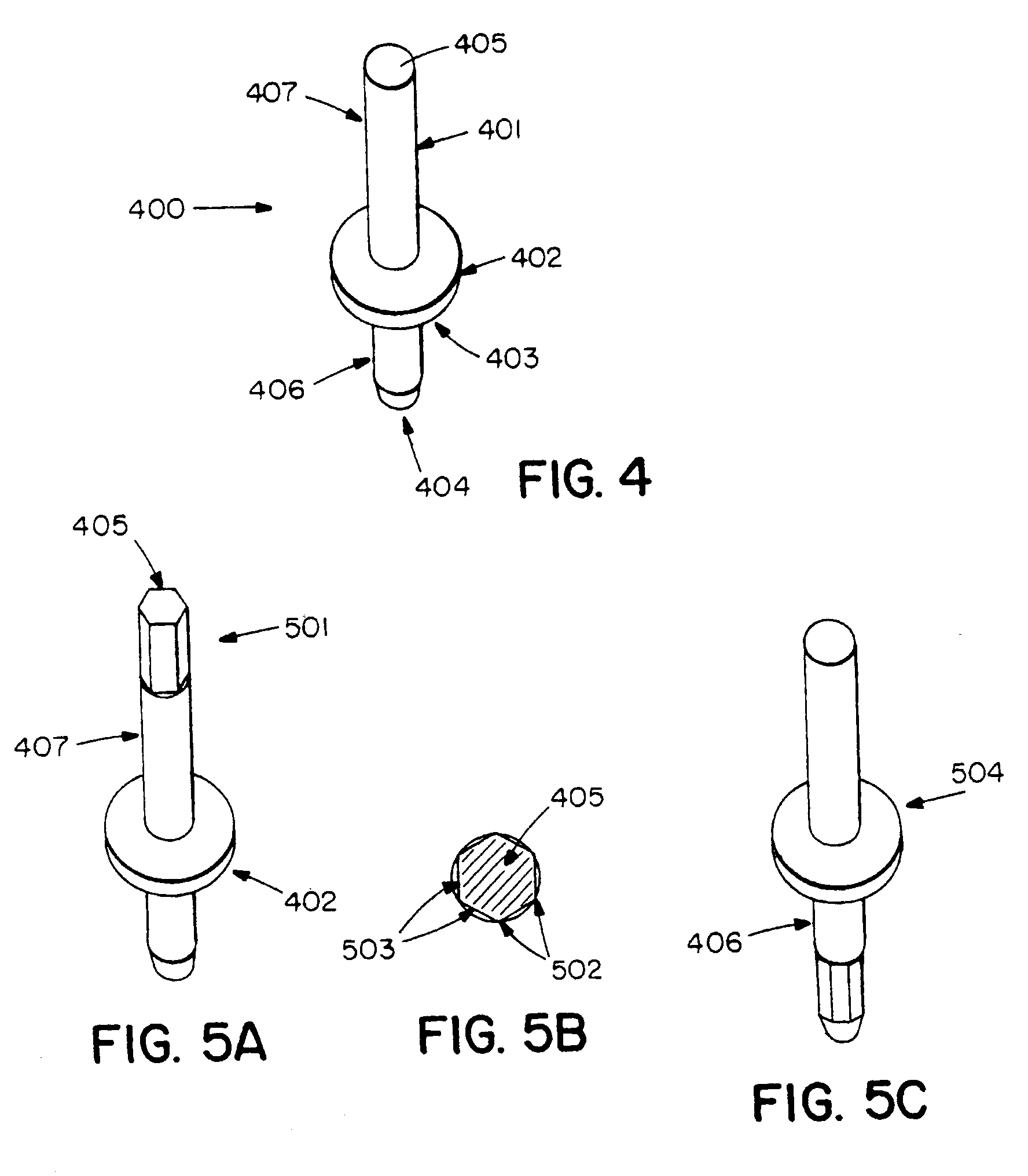Flanged terminal pins for DC/DC converters
a technology of dc/dc converters and terminal pins, which is applied in the direction of fixed connections, electrical apparatus contruction details, and association of printed circuit non-printed electric components, etc., can solve the problems of affecting the cooling air flow of the open frame converter, affecting the cooling air flow and affecting the cooling effect of the dc/dc converter. the effect of interferen
- Summary
- Abstract
- Description
- Claims
- Application Information
AI Technical Summary
Benefits of technology
Problems solved by technology
Method used
Image
Examples
Embodiment Construction
[0055]A description of preferred embodiments of the invention follows.
[0056]Throughout this discussion and in the figures we will assume the cross-section of the pin and its flange is circular. One skilled in the art would know how to incorporate the concepts presented here for other cross-sectional shapes, such as triangular or rectangular.
[0057]FIG. 1 shows a typical dc / dc converter 100 with a metal baseplate 101 (to which a heatsink might be attached), a housing or potting 102 (inside which is the converter's circuitry), and its through-hole pins 103. The pins have various diameters (e.g. 40, 60, and 80 mils) to handle their rated current, and various lengths below the housing (e.g. 110, 145, and 180 mils) to pass all the way through the PCB holes.
[0058]FIG. 2 shows an open-frame dc / dc converter 200 with a metal baseplate 201 and through-hole pins 203. Since there is no housing or potting in this converter, the converter's circuitry 202 is visible. In some open-frame converters, ...
PUM
| Property | Measurement | Unit |
|---|---|---|
| Temperature | aaaaa | aaaaa |
| Melting point | aaaaa | aaaaa |
| Length | aaaaa | aaaaa |
Abstract
Description
Claims
Application Information
 Login to View More
Login to View More - R&D
- Intellectual Property
- Life Sciences
- Materials
- Tech Scout
- Unparalleled Data Quality
- Higher Quality Content
- 60% Fewer Hallucinations
Browse by: Latest US Patents, China's latest patents, Technical Efficacy Thesaurus, Application Domain, Technology Topic, Popular Technical Reports.
© 2025 PatSnap. All rights reserved.Legal|Privacy policy|Modern Slavery Act Transparency Statement|Sitemap|About US| Contact US: help@patsnap.com



